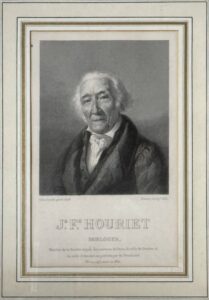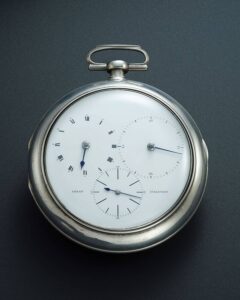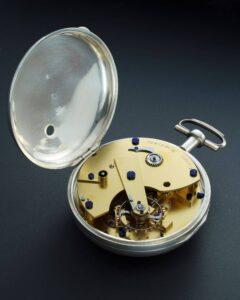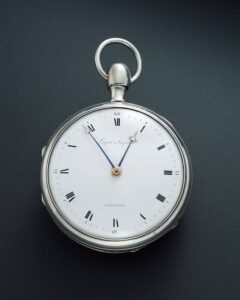The Legendary Watchmaking Dynasty: Urban Jürgensen’s Legacy
When we reflect on the development of watchmaking, several names stand out. From the innovations of Abraham-Louis Breguet to the timekeeping precision achieved by John Harrison, horology’s legacy is rich and spread across time. Yet, one name that often does not get its due outside of watch-enthusiast circles is Urban Jürgensen, the Danish dynasty that has helped shape the very fabric of independent watchmaking, and one that appears primed to re-enter the conversation in 2025.
This family business, founded by Jørgen Jørgensen in 1745, survived the challenges of two centuries and emerged by the end of the 20th century unique in the industry as an unfashionable brand, a brand that most watch-lovers had heard of but which few had seen or held in their hands.
You can’t limit the impact that Jürgensen has had on horology to just past triumphs. The brand’s upcoming revival promises to mix traditional craftsmanship with modern watchmaking innovations. However the watch industry evolves, I think Urban Jürgensen is perfectly poised to emerge again as one of the most distinguished names in luxury watchmaking. But to understand what makes this brand so special, let’s dive into the Jürgensen history and see how it has shaped both Danish and global watchmaking.

From Humble Beginnings to International Influence
The tale of Urban Jürgensen unfurls from Jørgen Jørgensen, born in 1745 in Copenhagen. He was the son of a court servant, and his blows with the pendulum of hard work have set the gears of his tale in motion toward a court clock of tenacity. By the age of 14, he had nearly beaten the odds to secure a place as an apprentice to the Lincke brothers, who were prominent watchmakers in the Copenhagen of that time. By my count, it was quite a feat for Jørgen to find his way to such a distinguished workshop. Jørgen’s watchmaking ambition then led him in the late 1760s to Germany and Switzerland, where he learned from even better masters.
Jørgensen spent more than two years in England, where he not only learned the essential technical skills of the trade but also exposed himself to new ideas that, when he returned to Denmark, influenced the way timepieces were made.
He came back in 1772 and, already in 1773, was making watches. That year, he also began to work with someone else, who might be called his partner, and together they made timepieces. By 1776, there was a proper watchmaking industry in Denmark and factory conditions were being used.
What started with Jørgen’s ideas has continued with his sons, particularly the eldest, Urban Jürgensen. Born in 1776, Urban makes a strong argument for being the most influential watchmaker of his time. Trained by his father, he was sent in 1797 on what now looks like a well-planned odyssey through Europe, paying stays in Geneva, Paris, and London to some of the best watchmakers of the time almost as if he were learning from the great masters. One of his teachers, Abraham-Louis Breguet, might have been the most noteworthy watchmaker of the 19th century and very well the most famous watchmaker of all time.
Revived Urban Jürgensen pushes to regain place at horology high table, 2025
Establishing a Legacy of Precision and Craftsmanship
After completing his studies, Urban Jürgensen returned to Denmark and transformed the country’s watchmaking scene. He came back with the passion and the techniques to make a new precision watch that was very much a new standard. If his technique was then applied to the new Rule of 1721, which really was the Rule, then that too was an Urban standard. These standards really make him the bridge figure who goes from very much the Danish watchmaker of the 18th century to the figure who helps lead the country into the 19th century and then onto the new precision standard.
In 1811, Urban started his own enterprise, carrying on with the family’s legacy of making luxury timepieces that had the same uncompromising quality that had marked his forebears’ work. Given the focus on marine chronometers and astronomical pendulum clocks, it’s understandable that the timepieces that we’re discussing got labeled as such in the previous section. That label, though, is a bit misleading. While Urban’s work on those timepieces was indeed groundbreaking and earned him a prestigious gold medal from the Royal Danish Agricultural Society, the actual foundations for the timepieces we’re discussing were laid far beyond his own business.
In 1830, after Urban passed away, his sons took over the family business and upheld the high standards that had been set. Their commitment to precision and innovation ensured that the Urban Jürgensen name continued being associated with timepieces of exceptional quality. During the brand’s 19th-century heyday, its progenitors also managed to keep Urban’s vision very much alive.

The Dark Years and the Struggle for Survival
Even though it had early success, the 20th century was a tumultuous time for Urban Jürgensen. After ownership changed hands several times and watch fashion began shifting, the company faced the most serious trials in its history. The global appetite for thinner, cheaper timepieces, coupled with the economic misery of World War I and the Great Depression, forced the company to go with the flow of the new market currents.
In 1919, a stake in the brand was acquired by Ed. Heuer & Co., a shift that temporarily restored luster to the brand’s image. However, the shock from the Great Depression led to a closed factory in Biel, Switzerland, in 1932. From then on, the brand went through a series of ownership transitions and operational declines in which it was at times nearly unrecognizable, far removed from its glamorous past. By the time it hit the late 1960s, the brand was producing mass-market timepieces under the name Jules Jürgensen, a remarkable come-down that was a far cry from the way the brand had once produced luxury watches.
A New Beginning: The Baumberger Era
In the 1970s, Swiss watchmaker Peter Baumberger resuscitated the brand. He had a vision for the future of Urban Jürgensen that took the brand in a new direction while still holding true to the parts of its essence worth preserving. Baumberger worked with English watchmaker Derek Pratt to create a new collection of timepieces. The pieces in this collection beautifully reflected the brand’s heritage of luxury. And with that, Baumberger and Pratt placed Urban Jürgensen firmly in the world of modern watchmaking.
The first pocket watch with modern technical innovations, followed by a series of tourbillons, was the foundation of the plan my father had when he took over the running of Urban Jürgensen in 1985. This plan, which included the production of tourbillon watches in ever-increasing series, was brought to life during the following decades. It carried my father and the company from one successful 18th-century watchmaking marvel to the next, creating momentous milestones in the history of the modern company we know today. By 2013, that solidified our next contemporary foundation—wristwatches—under the real Urban Jürgensen brand name.
The P8 and P4 movements, hatched with the help of Jean-François Mojon, marked a new era for in-house mechanical movements at Urban Jürgensen. Where the contemporary P8 shines with basic, beautiful watchmaking, the P4 opens up a wild world of watchmaking creativity.

A New Chapter: Kari Voutilainen and the Return to Glory
In 2021, a group of American investors took over the Urban Jürgensen brand, including watchmaker Kari Voutilainen as a co-CEO. Voutilainen, who is known for his precision and design excellence, has already had a huge influence on the brand, helping to create new collections that honor the legacy of Urban Jürgensen and yet also make use of modern design techniques and sensibilities.
The brand aims to return to its roots of producing high-quality, handcrafted timepieces that reflect its storied history under the leadership of Voutilainen. With Voutilainen’s daughter, Venla, supervising the manufacturing process in Biel, Urban Jürgensen is set to become once again a significant player in the high-end watch market.
In 2025, Urban Jürgensen returns not merely as a named entity but as a reemerging demonstration of Danish craftsmanship and a commitment to the art of watchmaking that the brand made us all respect in centuries past. Eager watch aficionados await not only the new collection but the opportunity to see what one of the truly iconic entities in horology has in mind as its future.
Urban Jürgensen: a 250-year uninterrupted history – The birth of a dynasty, 2023
Revived Urban Jürgensen pushes to regain place at horology high table, 2025
